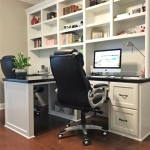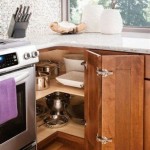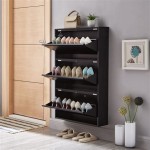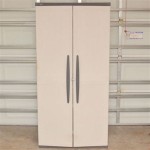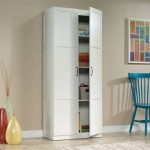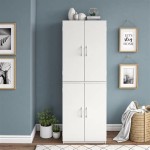Coffee Bar Cabinet Built In: A Guide to Elevating Your Home Coffee Experience
The integration of a built-in coffee bar cabinet represents a significant upgrade to any home, transforming a mere kitchen counter into a dedicated and aesthetically pleasing space for coffee preparation and enjoyment. This article delves into the various aspects of designing, planning, and implementing a built-in coffee bar cabinet, exploring its benefits, design considerations, and practical implementations.
A built-in coffee bar cabinet differs significantly from freestanding units or simple coffee stations. It is permanently affixed to the structure of the home, typically integrated into existing cabinetry or designed during a renovation project. This permanency allows for a more seamless and tailored appearance, enhancing the overall aesthetic of the kitchen or designated area. The design should consider the existing architectural style and color palette of the room to ensure a cohesive and unified aesthetic.
The decision to invest in a built-in coffee bar cabinet underscores a desire for organization, efficiency, and a heightened coffee experience. It provides a specific location for all coffee-related paraphernalia, eliminating clutter and streamlining the coffee-making process. Furthermore, the design can incorporate features tailored to individual needs and preferences, such as specialized storage compartments, integrated appliances, and custom lighting.
Key Benefits of a Built-In Coffee Bar Cabinet
A built-in coffee bar cabinet offers several advantages over alternative coffee station setups. These benefits range from aesthetic enhancements to practical improvements in efficiency and organization.
Firstly, a built-in coffee bar cabinet significantly enhances the aesthetic appeal of the home. By integrating seamlessly into the existing architecture, it creates a more refined and polished look. This integration eliminates the visual clutter often associated with freestanding coffee stations, creating a more cohesive and visually appealing space. The cabinet can be designed to match the existing cabinetry, creating a harmonious flow throughout the kitchen or designated area. Custom finishes, hardware, and lighting can be incorporated to further personalize the space and enhance its aesthetic appeal.
Secondly, the dedicated nature of a built-in coffee bar cabinet promotes superior organization. All coffee-related items, including coffee beans, grinders, filters, mugs, and cleaning supplies, can be stored in designated compartments, drawers, and shelves. This organization streamlines the coffee-making process, saving time and reducing frustration. The design can also incorporate specialized storage solutions, such as pull-out shelves for easy access to appliances or built-in organizers for coffee pods and utensils. The organized and decluttered space contributes to a more enjoyable and efficient coffee-making experience.
Thirdly, a built-in coffee bar cabinet can increase home value. While the extent of the increase varies depending on location and market conditions, well-designed and executed built-in features generally add value to a property. A dedicated coffee bar cabinet appeals to potential buyers who appreciate convenience, organization, and a refined aesthetic. The integration of high-quality materials, appliances, and custom features further enhances the value of the home. This investment can be seen as a long-term asset that contributes to the overall appeal and marketability of the property.
Design Considerations for a Built-In Coffee Bar Cabinet
Careful planning and design are crucial for the successful implementation of a built-in coffee bar cabinet. Several factors must be considered to ensure that the final product meets individual needs, aesthetic preferences, and practical requirements.
Firstly, the available space is a primary consideration. The dimensions of the designated area will dictate the size and configuration of the cabinet. It is important to accurately measure the space and consider any existing architectural features, such as windows, doors, or plumbing. The design should maximize the use of available space while ensuring that the cabinet does not obstruct traffic flow or impede other kitchen functions. If space is limited, consider a vertical design that utilizes wall space for storage and display. Alternatively, if ample space is available, a larger cabinet with multiple sections and features can be incorporated.
Secondly, the functional requirements of the coffee bar cabinet must be carefully considered. Determine the specific appliances and equipment that will be housed in the cabinet, such as a coffee maker, grinder, espresso machine, or milk frother. Ensure that the cabinet is designed to accommodate these appliances, with appropriate electrical outlets and ventilation. Consider the amount of storage space needed for coffee beans, filters, mugs, and other supplies. The design should also incorporate features that enhance the coffee-making process, such as a built-in water dispenser or a designated area for prepping and serving coffee.
Thirdly, the aesthetic style of the coffee bar cabinet should complement the existing decor of the home. Consider the color palette, materials, and architectural style of the kitchen or designated area. Choose cabinet finishes, hardware, and lighting that coordinate with the existing decor. The design should also reflect individual preferences and personality. Whether a modern, traditional, or eclectic style is desired, the coffee bar cabinet should be a cohesive and visually appealing addition to the home. Consider incorporating decorative elements, such as tile backsplashes, open shelving, or glass-front cabinets, to further enhance the aesthetic appeal.
Practical Implementation of a Built-In Coffee Bar Cabinet
The practical implementation of a built-in coffee bar cabinet involves several steps, from initial planning to final installation. Careful attention to detail and adherence to best practices are essential for a successful outcome.
Firstly, a detailed design plan must be created. This plan should include precise measurements, specifications for materials and finishes, and a clear layout of the cabinet's features. Consider consulting with a professional designer or cabinet maker to ensure that the design is feasible and meets all requirements. The plan should also include a budget that outlines the cost of materials, labor, and any necessary permits. A well-defined plan will serve as a roadmap for the entire project, minimizing errors and ensuring a smooth and efficient implementation process.
Secondly, the necessary permits and approvals must be obtained. Depending on the location and scope of the project, building permits may be required. Check with the local building department to determine the specific requirements for the project. Ensure that all electrical and plumbing work is performed by licensed professionals and complies with local codes. Obtaining the necessary permits and approvals is essential for ensuring the safety and legality of the project.
Thirdly, the installation process should be carefully managed. If the project involves significant structural modifications, consider hiring a professional contractor. Ensure that the contractor is licensed and insured, and has experience with similar projects. Closely supervise the installation process to ensure that the work is performed according to the design plan and schedule. Regularly communicate with the contractor to address any issues or concerns that may arise. The quality of the installation is crucial for the long-term durability and functionality of the coffee bar cabinet.
Finally, proper maintenance and care are essential for preserving the beauty and functionality of the built-in coffee bar cabinet. Regularly clean the cabinet surfaces with appropriate cleaning products. Avoid using abrasive cleaners or harsh chemicals that could damage the finishes. Inspect the cabinet for any signs of wear or damage, and address any issues promptly. Proper maintenance and care will ensure that the coffee bar cabinet remains a beautiful and functional addition to the home for years to come.

Built In Kitchen Coffee Bar Ideas A Blissful Nest

38 Modern Coffee Bar Ideas To Jump Start Your Morning

38 Modern Coffee Bar Ideas To Jump Start Your Morning

Built In Coffee Bar Inspiration Fhl Design Rockwall Interior

Modern Coffee Bar Ideas You Ll Love In 2025 Jane At Home

Built In Kitchen Coffee Bar Ideas A Blissful Nest

Built In Coffee Station Inspiration Coffeebarcabinet Coffeestation Builtincoffeebar Coffeebarideas Kitchencoffeebar Contemporarycoffeebar

17 Designer Approved Modern Coffee Bar Ideas

I Built My Dream Coffee Bar With An Epic

Coffee Station Ideas For The Luxury Kitchen Heather Hungeling Design

